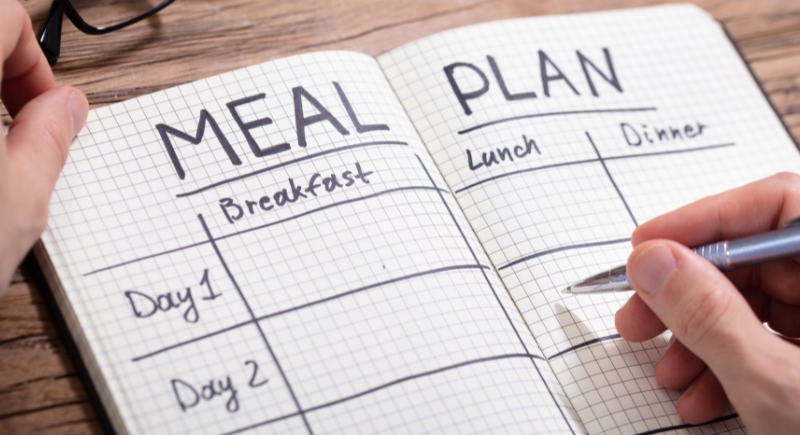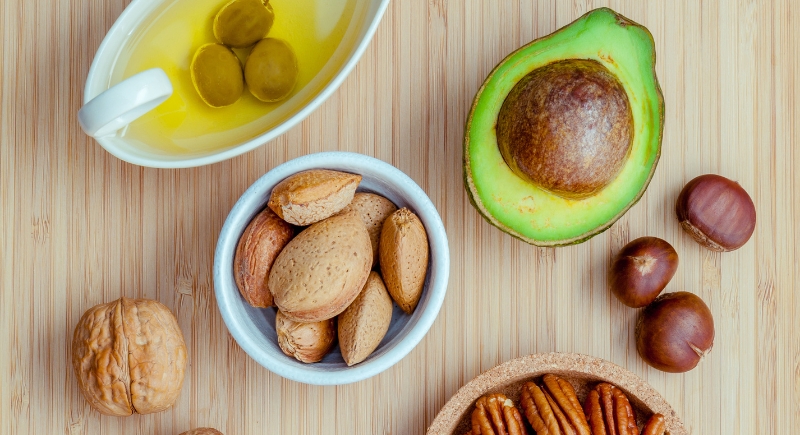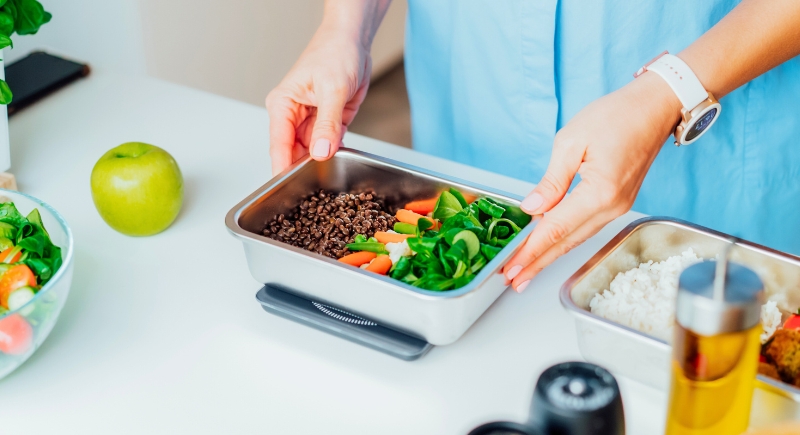Many modern dieticians confirm that keeping weight off for good has nothing to do with sheer willpower—it is all about creating a lifestyle that naturally sticks. Once you’ve dropped the pounds, the real test is to make sure they stay gone. Those who win at long-term weight maintenance swap quick fixes for smart, steady habits that become second nature.
Sticking to a Meal Routine

Credit: Getty Images
Research shows that eating at regular times boosts metabolism, keeps blood sugar in check, and even helps with weight management. Bigger breakfasts and earlier meals line up perfectly with your body's natural rhythms and make every bite work harder for you. Plus, staying consistent with meals can tame hunger hormones.
Choosing the Right Fats

Credit: Canva
Some fats are pure gold for your body. Monounsaturated fats from avocados, olive oil, and nuts can help balance appetite hormones and steady blood sugar levels. Eating just one avocado a day has been linked to better diet quality and lower LDL cholesterol. Polyunsaturated fats, like those in salmon and walnuts, support heart health and help tame inflammation.
Incorporating Walks In Daily Routine

Credit: Getty Images
A simple walk can help you lose more weight than you might think. Brisk walks, in particular, can torch about 150 calories in just 30 minutes, melt away belly fat, and boost your overall health at the same time. It keeps your metabolism humming by preserving lean muscle.
Making Smart Snack Choices

Credit: pixelshot
Smart snacking can turn a busy day into a health win without breaking a sweat. Packing your own bites keeps hunger in check and makes it easier to steer clear of vending machines and drive-thrus. Hard-boiled eggs are an easy grab-and-go option and deliver plenty of protein to keep energy high and cravings low.
Reading the Labels

Credit: Getty Images
Food labels hold all the juicy secrets about what you are really eating, and learning to read them can give you a major edge. A glance can uncover hidden sugars, salty surprises, and fats that love to sneak in unnoticed. Keeping an eye on portion sizes, calorie counts, and nutrient levels helps crush your health goals.
Understand Serving Sizes

Credit: iStockphoto
Supersized portions have quietly crept onto plates over the years and have forced people to eat more without realizing it. Paying closer attention to how much you serve yourself can make a huge difference in reaching weight goals. Simple moves like using smaller plates, measuring food, and pre-portioning leftovers help keep calories in check without feeling restrictive.
Avoiding Prolonged Sitting

Credit: Getty Images
Long hours glued to a chair are not beneficial for your health. Sneaking in short bursts of movement—like a five-minute walk every half hour—can boost insulin sensitivity, lower blood pressure, and fire up your metabolism. Even simple tricks like setting a reminder to stand, doing quick stretches, or taking phone calls on the move can add up fast.
Swapping Sugary Drinks

Credit: Canva
What lands in your glass can quietly stack up calories just as fast as your plate can. Drinks like a 12-ounce soda pack around 150 calories and up to 11 teaspoons of sugar, all without leaving you full. Swapping sugary sips for water, green tea, black coffee, or herbal teas keeps your body hydrated and your calorie count in check.
Practicing Mindful Eating

Credit: Getty Images
Busy schedules make it way too easy to snack without thinking. Mindfulness flips that script by getting you to slow down, notice every flavor, and actually enjoy what you are eating. Paying attention to hunger cues instead of habits can help prevent overeating and even ease stress-driven cravings.
Reaching Your Five-A-Day

Credit: Canva
Piling your plate with veggies is a simple and delicious way to give your health a major lift. Veggies are rich in nutrients, light on calories, and fill you up while keeping things easy on your waistline. Mixing them into breakfast omelets, tossing extra handfuls into soups, or keeping crunchy snacks in the fridge can make hitting that five-a-day goal a breeze.
Ensuring Realism

Credit: pexels
A goal without a plan is like a road trip with no map and a half-empty tank. Instead of chasing vague ideas like "get healthier" or "lose weight," try zeroing in on something specific, like taking the stairs instead of the elevator or skipping soda at lunch. Dropping 1–2 pounds a week might not turn heads, but it builds steady progress.
Building Your Support Network

Credit: Getty Images
Doing it alone might sound noble, but even superheroes need a sidekick. Having a solid support crew can turn a frustrating weight loss journey into something that actually feels doable—and even fun. Research backs it up: people who lean on others during weight loss tend to stick with it longer, stress less, and see better results.
Establishing a Consistent Sleep Schedule

Credit: Canva
Lack of rest throws hunger hormones into chaos, cranks up cravings, and makes it harder to feel full. Ghrelin levels rise, leptin drops, and suddenly, that extra slice of cake looks way too tempting. Make sure you’re doing your part to help your body recharge properly.
Trying New Exercises

Credit: Getty Images
Mixing up your fitness routine keeps things exciting. Activities like cardio drumming add energy and rhythm, while HIIT sessions torch calories fast. Even low-impact options like tai chi or vibration exercises can shake up your schedule.
Eating Before You Shop

Credit: Getty Images
Hunger messes with your brain and steers you straight toward high-calorie foods you did not even plan on buying. Grabbing a snack before hitting the store, sticking to a grocery list, and dodging the candy aisles can save you from those sneaky impulse buys and keep your cart packed with smarter, feel-good choices.





